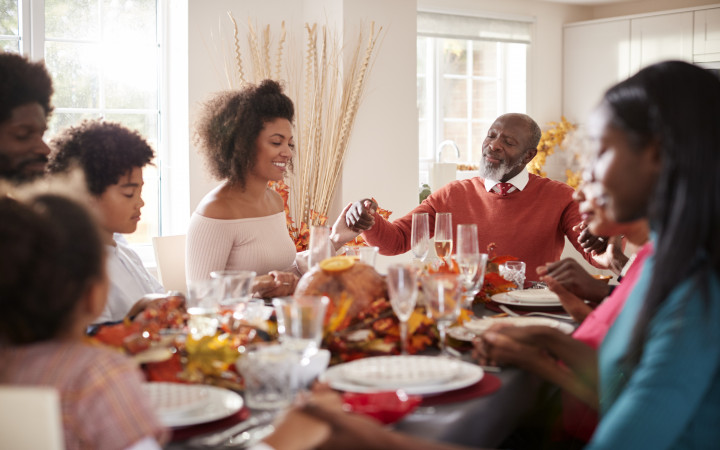Today’s Wonder of the Day was inspired by Alan from Midvale. Alan Wonders, “How do people celebrate Kwanzaa?” Thanks for WONDERing with us, Alan!
Family. Feasts. Gifts. Black, red, and green candles. If you’re unsure what we’re talking about, then you’re in for a treat. Why? Because today’s Wonder of the Day is all about Kwanzaa!
What is Kwanzaa? This holiday started in 1966 with Dr. Maulana Karenga. He created the celebration as a way for Black Americans to celebrate their shared African heritage. Dr. Karenga also hoped Kwanzaa would be a way for people of African ancestry to bond as a community.
Does your family celebrate Kwanzaa? If so, you already know it’s a fun and special time of year. Beginning on December 26, friends and families gather to light the kinara.
The kinara is a special candle holder. It holds one black, three red, and three green candles. They represent the seven principles of Kwanzaa. After lighting each candle, families spend time discussing the principle and how it can make a difference in their lives.
What are the seven principles of Kwanzaa? They include:
Umoja (unity),
Kujichagulia (self-determination),
Ujima (collective work and responsibility),
Ujamaa (cooperative economics),
Nia (purpose),
Kuumba (creativity), and
Imani (faith).
After lighting each candle, families take part in various traditions. Many read or recite poems or quotes from well-known members of the Black community. Plenty of families also sing, dance, and drum as part of their celebration. And, of course, they feast together.
The name Kwanzaa comes from the Swahili phrase “matunda ya kwanza.” In English, this means “first fruits” or “first harvest.” As you might expect from this meaning, fruit and other crops have a special place in the celebration.
Many families place fruits, vegetables, and nuts on a special mat called the mkeka. Corn is also part of many celebrations. It represents children as hope for the future of the family. Often, an ear of corn is added to the mkeka for each child at the Kwanzaa celebration.
Of course, no Kwanzaa is complete without time to honor a family’s ancestors. Many people do so on the sixth night with the tradition of the unity cup. Each member of the family takes a drink from the same cup as a way to represent unity and remembrance.
Some families eat a special meal each night of Kwanzaa. However, the largest feast takes place on the final evening of January 1. Called karamu, it is also often followed by gift giving. Family members present each other with presents as a final way to observe the Kwanzaa tradition. Often, these gifts are handmade. They may also be educational or related to arts, culture, and heritage.
Do you observe Kwanzaa? If so, what is your favorite part of the celebration? If not, do you see any similarities between Kwanzaa and one of your family traditions?
Standards: CCRA.R.4, CCRA.L.3, CCRA.L.6, CCRA.R.10, CCRA.R.1, CCRA.SL.1, CCRA.L.1, CCRA.W.10, CCRA.SL.4, CCRA.L.2, NCAS.A.1, NCAS.A.2, NCAS.A.3




